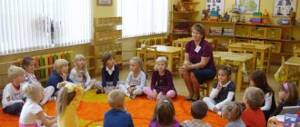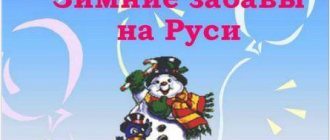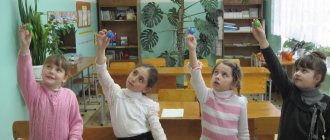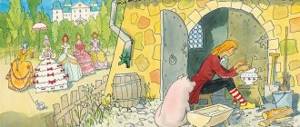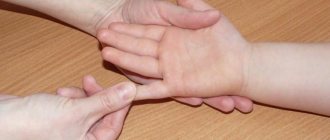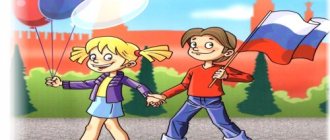Short stay group (STG)
The Short-Term Stay Group (STG) accepts children aged 1 to 3 years.
This is a government service and is provided to everyone who has submitted the necessary documents and joined the queue. The GKP works 3 times a week for 3 hours.
Classes are held from 8.30 to 11.30 or from 16.00 to 19.00 depending on the schedule.
- * Information for parents:
The most common question, especially among parents with their first child: At what age and is it necessary to take a child to kindergarten at the age of 1-3 years?
Being in kindergarten is the first test of personal qualities in a child’s life. Getting to know the outside world and children like himself.
The opinions of experts, despite the difference in details, agree on one thing: from a psychological point of view, introducing a child to other children in a playful and relaxed way helps to enter the general society in which he will live and the sooner the child begins to adapt to it, the better.
It is worth noting that young parents should also be prepared for such a step and approach it responsibly and thoughtfully.
Before bringing your child to a short-stay group, make sure that the place you choose is the one that is most suitable for the child.
Read the reviews, talk to mothers who already take or have taken their children here, talk about the conditions of stay with the teachers, look with your own eyes at the equipment, cleanliness and sanitary conditions in the premises.
- What activities are offered to children in the short-stay group?
Once a week classes are held in fiction , drawing , modeling , design physical education and music classes are held 2 times a week .
How to sign up for a short-stay group
There are short-term groups in almost every preschool institution. In order to be accepted into the State Committee for Residence, you must do the following:
- Contact the head of the kindergarten with a request for admission to the GKP group. If there are places, they will take you.
- If there are no places in this kindergarten, you need to contact the so-called. "Mini-OSIP" (district information support service).
As a rule, they are located in the same educational complexes. You apply there regarding enrollment in the GKP group.
(Additionally on the topic: How to register for kindergarten through the city services portal)
Since December 1, 2020, by decree of the Moscow Government, all district information support services ( OSIP ) have been liquidated. They have been replaced by the “My Documents” service. You can find out contact information about the mini-OSIP e of your complex by calling any department of this complex.
What documents must be collected to enroll a child in a short-term stay group? (for submission to mini-osip)
- passport of the parent (legal representative);
- child's birth certificate;
- a document confirming the child’s registration in the city of Moscow;
- document certifying the right to be included in a preferential category (if available)
Enrollment in the GKP group occurs as in a regular kindergarten. You are added to the queue and offered a place in the GKP as it becomes available.
Procedure for enrollment in the GKP (short-term stay group)
When considering the issue of enrollment in the GKP, children have priority for enrollment:
- living in this area (with registration)
- preferential categories of children.
After enrollment of children from the above categories, children are accepted:
- with temporary registration
- from other areas.
To notify parents about the enrollment of a child in the kindergarten, a notification is sent by email or directly by phone call.
* An example of a written written response to a child’s enrollment in kindergarten.
When entering kindergarten, you must have a medical card, and by September 1, you must prepare a certificate:
- about the child's contacts
- Analysis of urine
- general blood test
- analysis for enterobiasis and worm eggs.
a service agreement is drawn up between the kindergarten and the child’s parents , which will spell out all the rights and obligations of the parents and kindergarten staff.
Such an agreement legally protects both parties from possible claims, so take the time to read it carefully.
Features of a child’s stay in the GKP:
Considering that the child is given for a short-term stay, meals are not provided in this group. Drinking regime only. Therefore, before bringing your child to this group, do not forget to feed him.
The adaptation process in the State Customs Committee group is very gentle. Parents can periodically enter the group and visit their child. This allows you to smoothly and without any special emotional experiences endure a short-term separation from your parents, keep your psyche intact and not cause negative associations for the child associated with his stay in kindergarten.
The first days of visiting the GKP last only half an hour.
Gradually, the stay time increases depending on the degree of adaptation of the child. Educators advise not to escalate the situation, not to overload children and to bring them for a short period of time. 30 minutes is more than enough for kids for the first days in the hospital.
The usual schedule in the GKP group:
Monday: 9.15-9.25 - Musical games. 10.10-10.20 — Didactic game. Tuesday: 10.00 - 10.10 - Development of movements. 10.20 -10.30 — Artistic creativity (alternating modeling, drawing, appliqué). Wednesday: 10.00 - 10.10 - Didactic game. 10.20 -10.30 — Speech development. Thursday: 10.00 - 10.10 - Movement development. 10.20 - 10.30 - Games with building materials. Friday: 10.10 - 10.20 - Educational games. 10.30 - 10.40 - Musical games.
The cost of a child’s stay in a state kindergarten in a short-stay group:
— Monthly payments for stay – 1500 rubles. per month.
If you have benefits, you can apply for reimbursement of part of the payment. This application can be completed at the time of signing the agreement with the preschool educational institution.
Additional costs for staying in kindergarten
As for collecting additional funds, it all depends on the management of the kindergarten. The times when people gathered in large quantities and for everything are a thing of the past.
Of course, they can raise money for flowers and gifts for teachers on major holidays, but the amounts will most likely be small and at the discretion of the parents themselves.
Well, if you suddenly encounter outright extortion, do not forget about the anti-corruption hotline.
more about illegal collections in schools and kindergartens here.
Classes for preschoolers on the topic “My kindergarten”
Lesson objectives:
- expand the pupils’ ideas about their kindergarten (why it is needed, who works in it, how adults take care of children in kindergarten);
- develop orientation in the room and on the site, interest in the life of the kindergarten;
- instill the rules of a culture of behavior, communication with adults and peers in kindergarten (say hello, say goodbye, thank you, address adults as “you”, address kindergarten employees by name and patronymic, rules of polite and friendly attitude towards peers in kindergarten);
- to form ideas about oneself as a member of the kindergarten group, a feeling of a single friendly family, the desire to establish friendly relationships with people around, to involve in participation in holidays, joyful communication with peers and adults in kindergarten;
- develop emotional responsiveness to adults and children;
- to cultivate a sense of gratitude to adults, attachment to the native kindergarten, teacher, sympathy for peers, careful attitude towards toys, books, personal belongings, plants, animals.
Cognitive practical activity. Group Room Tour
Objectives: expand your understanding of your kindergarten (why it is needed, who works in it, how adults take care of children); develop orientation in the group and its premises; cultivate a sense of gratitude to adults and a desire to maintain order in the group.
Questions for children:
— Why do we need a kindergarten?
— Why do you love your kindergarten?
— What don’t you like about kindergarten?
— Who works in the kindergarten?
The teacher summarizes. All adults work. To prevent children from being left alone at home, they are brought to kindergarten. Also because there are many interesting activities in kindergarten, you can learn a lot. Children and adults feel good when they take care of each other.
Excursion progress
The teacher reports that Dunno came to visit them today. He has never gone to kindergarten and really wants to know what kind of kindergarten it is.
Today, together with Dunno, we will travel around our group and talk about what rooms it has and what they serve, we will show how much adults have done to make children live comfortably and joyfully in the garden.
The inspection begins in the dressing room. Children name the room they are in, tell its purpose, about the furniture, and that all this was made by adults for children.
The group room has a lot of toys, different corners where you can play, look at pictures, draw, build, watch plants, etc. There is a place where you can be alone. Adults do everything to ensure that children are interested and have fun in kindergarten. Children's attention is drawn to the order in the room, and it becomes clear why it needs to be maintained. The teacher suggests thinking about what can be done to make the group even more beautiful and comfortable. Finds an opportunity to bring some of the children’s ideas to life (decorate the group with children’s drawings, place flowers on the tables, etc.).
In the same way, the teacher talks with children in other rooms, emphasizing the need to take care of everything that was created by the labor of adults. At the same time, he clarifies that children are the masters in their group, they maintain cleanliness and order in it. Adults and children love their kindergarten.
At the end of the excursion, Dunno thanks the children for their story, says that he liked it in kindergarten, and he will definitely come to visit them.
Cognitive practical activity. Sightseeing tour of the kindergarten
Objectives of the excursion: to introduce the premises (kitchen, laundry, medical office, office of the head, deputy head, etc.), professions of people who work in the kindergarten (preschool teacher, assistant teacher, cook, music director, head of the kindergarten); teach them to call them by name and patronymic; develop indoor orientation; instill the rules of a culture of behavior and communication with adults in kindergarten: say hello, say goodbye, thank you, address adults as “you,” and kindergarten employees by name and patronymic.
The teacher invites the children to take a tour of the kindergarten. During the excursion, children learn more about the work of a cook and a housekeeper. Reminds children of the need to say hello, goodbye, thank adults, and address them as “you.”
In the kitchen, students get to know the cook, observe the actions and relationships of adults, examine the stove on which tasty and healthy food is prepared, utensils, and household appliances (electric meat grinder, potato peeler, blender, etc.). By activating the children, the teacher asks questions about the purpose of certain items of utensils and equipment, the reason for their large size, and whether it is easy for the cook to prepare food for all the children in the kindergarten.
During the excursion, the children learn that laundry workers also take care of them at the kindergarten. They meet a linen repair and laundry worker, who talks about how she washes and irons the linen for all the children in the kindergarten. Children look at washing machines, clothes dryers, ironing machines. They note how hard the laundry workers work.
Conversation after the tour:
— How do adults take care of you in kindergarten?
— What can you do to make the work of laundry workers easier? (Eat carefully so as not to stain the tablecloths, wash your hands more thoroughly so that it is easier to wash towels, etc.)
— How can we express gratitude to the chefs for their work? (Say thank you, eat everything they cook, etc.)
— Who works with you all day?
— What does a preschool teacher do?
- Why do you love him?
— What does a teacher’s assistant do?
- How can we help her?
— What can you do nice for adults in kindergarten? (Say hello, smile when meeting, congratulate you on your birthday, happy holidays.)
Game activity. Didactic game “You tell me, and we will guess”
The purpose of the didactic game: to consolidate ideas about the professions of kindergarten employees, knowledge of their names; development of the ability to compose short descriptive stories, intelligence.
The teacher distributes envelopes with photographs of kindergarten staff to the children.
Each child must tell about who is shown in the photograph, without naming his specialty (what he does, what he has in his office, what tools. Children must guess the profession of the kindergarten employee and, if possible, his first and patronymic name.
Game activity. Simulation game “Washing clothes”
Goal: to consolidate an understanding of the components of the labor process and the ability to expressively demonstrate actions.
Children imitate all the components of washing clothes: pour water into a basin, add detergent, wash, wring out, shake off, hang, iron, fold the clothes.
Cognitive and practical activities. Simulation of the process of preparing national dishes
Goal: acquaintance with Belarusian national cuisine; speech development.
The teacher tells the children that every nation has its own national dishes.
— What Belarusian dishes do you know?
Summing up the children's answers, the teacher says that Belarusians have many national dishes: potato pancakes, babka, sauerkraut, machanka, scrambled eggs with lard, kholodnik, etc. He invites the children to consider a subject-schematic model (the purpose of labor - the subject (material of labor) - tools and equipment - labor actions - result) and pictures depicting the process of preparing various dishes.
Children lay out pictures according to the diagram, depicting the preparation of dishes, and talk about the operations and their sequence:
Boiled beets are grated and placed in chilled boiled water. Chopped green onions, boiled eggs and fresh cucumbers are added there. Before serving, the kholodnik is filled with sour cream and sprinkled with finely chopped dill.
Peeled potatoes are grated, salt, pepper, fried lard and onions are added, placed in pots or on a baking sheet and baked. Serve topped with sour cream.
Peeled potatoes and onions are grated, add salt, pepper, egg, kefir. Pancakes are fried in a frying pan and served with sour cream and milk.
Didactic game “Who needs what for work?”
Goal: to clarify children’s ideas about the professions of kindergarten employees, about the tools that belong to people in this profession; speech development.
Children receive sets: cards depicting the professions of kindergarten staff and cards depicting tools.
Assignment: arrange the cards in pairs - depicting a profession and tools belonging to people of this profession.
The teacher invites the children to tell who needs what for work and why.
Artistic activity. Reading and conversation on the content of the poem
Goal: developing the ability to tell and play out the content of a poem.
The teacher reads to the children a poem by G. Ladonshchikova “About myself and about the children.” The children list what the kids did in kindergarten and tell how they can beat him.
— Guys, what will you tell your parents about how you spent the day in kindergarten? What do you remember about him?
Listening and singing songs about kindergarten.
Cognitive practical activity. Tour of the kindergarten site
Objectives: to introduce the territory of the preschool education institution; develop orientation on the site; expand ideas about the professions of adults working in kindergartens and how they care for children; to cultivate a sense of gratitude to adults, attachment to one’s own kindergarten, and to stimulate the desire to maintain order in the kindergarten area.
Excursion progress
Dunno comes to visit the guys. The teacher says that there is an area on the territory of the kindergarten where children go for a walk. Together they walk around the territory of the preschool educational institution, their attention is drawn to green spaces, play equipment, a sports ground, and flower beds. Dunno asks:
- Who planted all these trees, shrubs, flowers, built slides, playhouses? (Adults.)
- Why did they do this? (So that the children are comfortable and enjoy walking in the area.)
— What needs to be done to make the territory of the kindergarten beautiful and cozy? (Take care of everything, take care of it.)
- Why is the site so clean?
The children explain to Dunno that clean things happen when no one litters and when people clean up. Children remember the rules of behavior on the site: you cannot throw garbage, trample the grass, pick flowers, or break buildings. In the kindergarten, a janitor monitors the cleanliness of the area. The teacher asks the children how they can help the janitor in his work.
The guys inspect the group's area and restore order. The teacher reminds that after cleaning their area, the children helped the janitor. Children are the masters of their area: they keep it clean and tidy.
Cognitive practical activity. Targeted walk to the younger group
Goal: developing an image of oneself as a member of a kindergarten group, a feeling of a single friendly family; the desire to establish friendly relationships with the younger children of the kindergarten and take care of them.
Progress of the walk
Before visiting the younger group, the teacher tells the children that the kindergarten is like a family in which there are both adults and children, where everyone cares and helps each other. Remind the rules of communication with adults and children: say hello, be able to ask questions, ask questions, be interested in activities, games, invite them to visit you.
Children get acquainted with the teacher, assistant teacher, children, look at toys, a living corner, and help the kids clean up the toys.
Communication. Conversation on the topic “Is everything okay in our group”
Goal: stimulating the desire to maintain order in the group; the formation of a desire to protect the work of adults and a careful attitude towards toys, books, and things.
Conversation on questions:
— Why do you need to monitor the cleanliness of the room?
-Who brings order to the group?
— How can children help the assistant teacher, the teacher?
Children are offered the game situation “Who will notice the disorder in the group room.” The teacher notes the most attentive children and offers to put things in order in the doll, book, and construction corners. After work, he draws attention to how beautiful the group has become, and this was done by the children themselves. He emphasizes: we must play in such a way that there is order everywhere.
The teacher and children together decorate the group room with autumn bouquets.
Word game "If it weren't for..."
Goal: to consolidate children’s ideas about the role of people of different professions working in kindergarten.
The teacher begins the sentence, and the children finish.
- If there were no cooks in the garden, then...
- If there were no laundresses in the garden, then...
- If there were no music director, then...
- If there were no teachers, then...
- If there were no wipers, then...
- If there were no assistant teacher in the kindergarten, then...
Complex lesson “Our friendly group”
Objectives: to form children’s ideas about friendship, friend; develop the ability to analyze communication situations, evaluate the behavior of interaction participants; to cultivate in children the moral qualities of kindness, care, attention, skills and abilities to communicate with peers: do not offend, forgive, sympathize.
Materials: paper, paints, brushes.
Progress of the complex lesson
Q. Guys, is it good or bad to be alone at home, in a kindergarten group, or anywhere else? Why? (When you are alone, it can be boring, sad, lonely.).
- Why do you need friends?
-Who can be called a good friend?
— What do you like to do with friends?
— Do you quarrel with your friends? Because of which?
- How do you make peace?
The teacher invites the children to solve problem situations: “The boy took the girl’s toy,” “The girl can’t fasten the buttons,” “She rides on the swing for a long time, and others can’t wait their turn,” “Accidentally destroyed a friend’s building,” “The girl is crying,” “The boy brought a toy from home and won’t let anyone play with it,” etc.
Children evaluate actions, tell how, in their opinion, real friends should act. They name the rules of true friends (don’t offend, help, care, share, don’t quarrel, forgive each other). They talk about ways to resolve conflicts (give in, agree, take turns, apologize, etc.).
Game "Kind Words"
Children stand in a circle. The teacher offers to say a kind word to the child standing next to him (cheerful, smart, not greedy, kind, brave, attentive, I like you, it’s interesting to play with you; you have beautiful eyes, hair, hairstyle, dress, etc.).
The teacher invites the children to think about how, with the help of gestures, they can convey their kind attitude towards another person.
Drawing “Gift for a Friend”
Q. How can you please a friend? (Congratulate you on a holiday or birthday, say good words, make a gift.) Think about what you can draw for your friend and give him to make him happy?
Children sit at tables and draw a gift for a friend.
Communication. Exercise "Mirror"
Goal: familiarization with the external expression of different emotional states: sadness, anger, fear, surprise, calm, joy; developing the ability to establish connections between different emotions and the reasons that cause them.
Children look at pictograms and depict different emotional states in front of the mirror. They come up with stories and convey the state of the characters through facial expressions and gestures. They discuss how to help a friend when he is sad.
Communication. Exercise “I want”
Goal: to strengthen children’s idea of friendship and friend; formation of appropriate beliefs.
The teacher asks what real friends should be like. Children, together with the teacher, remember various heroes of fairy tales and cartoons who can be called true friends.
The teacher offers to repeat after him: “I want to learn to be a good friend. I want to be kind, brave. I want not to quarrel with my friends. I will not fight or offend others. I will learn to be like this!”
Children write stories about themselves and their friends.
Game activity. Word game "Magic Chair"
Goal: developing the ability to notice the merits of peers and give compliments.
The teacher invites the children to sit on the “magic chair”. The one who sits on it immediately “highlights” all the advantages. Children take turns sitting on a chair, and the rest compliment the person sitting, naming only good qualities.
Results of the classes on the topic “My kindergarten”
- They are oriented in a group, a preschool educational institution, a site, the purpose of different premises, and the variety of activities of adults.
- They realize that adults and children here care about each other. The kindergarten is their common home, it should be kept clean and tidy and this depends on everyone.
- They master the forms of showing politeness and respect for elders: saying hello, saying goodbye, thanking.
- They understand that in a preschool educational institution, boys and girls treat each other kindly, call each other by name, share toys, and are friends.
L. Nikonova
